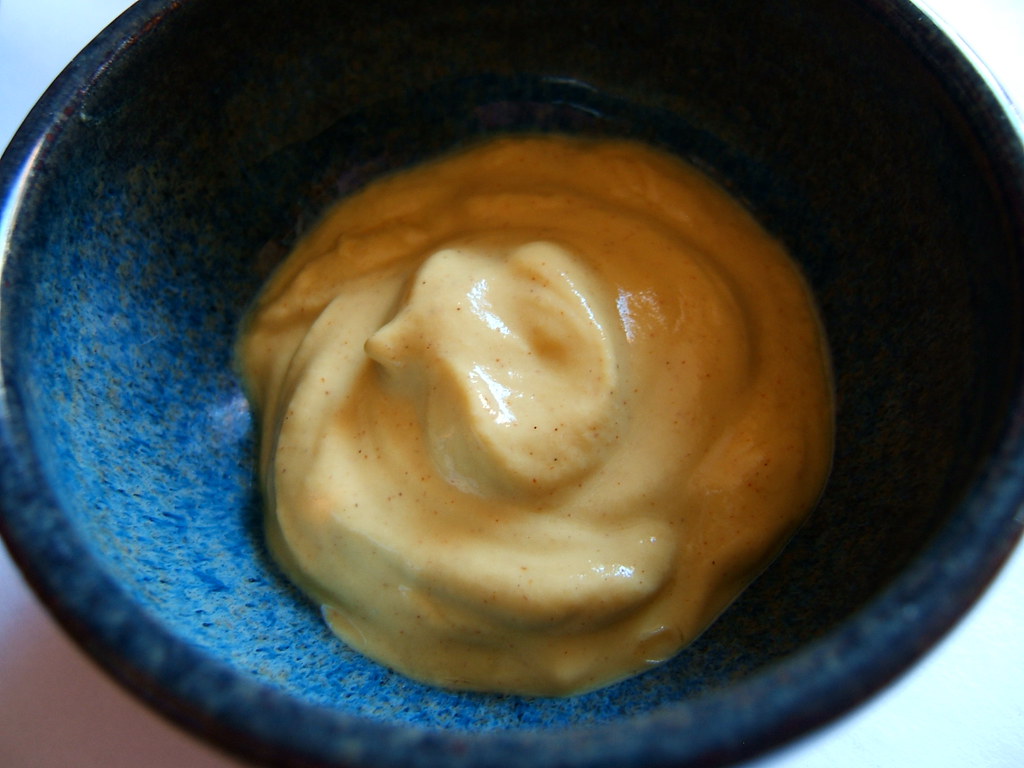Speaking from experience, mustard is a pretty polarizing condiment. I’ve met people who hate it, people who think it has its place, and people who put it on whatever they please. I, myself, love mustard and am unreasonably excited to write this article. But if you don’t like yellow mustard, that doesn’t mean you won’t like any other kinds. Each mustard has a unique flavor that differentiates it enough for it to be, well, it’s own type of mustard.
But whatever your opinion of the condiment’s flavor, mustard is more complicated than you’d think. There are so many types of mustard because there are so may ways to make it, unlike its sweet counterpart, ketchup. There are three basic types of mustard seeds: yellow, brown, and black. Each kind of mustard is made from a certain ratio of the basic types of seeds. Also, mustard isn’t tangy, bitter, or hot until the ground seeds are mixed with a liquid, which is a neat little chemical reaction that I think we all can appreciate.
Now, without further ado, let’s break these beauties down.
American Yellow Mustard

We’ve all seen it. More commonly referred to as just “mustard,” it’s probably your go-to for hot dogs, potato salad, and almost anything else you can imagine using mustard for. I bet there’s some in your fridge right now. This type of mustard is made of yellow mustard seeds and vinegar, but gets its yellow color from turmeric. This is one of the mildest types of mustard, and it’s a solid starting point for your taste buds.
Dijon Mustard

Dijon is a bit fancier than your typical yellow mustard. Instead of mixing mustard seed with vinegar, white wine is used in its place, and the seeds are brown instead of yellow. This gives it more of a bite, which still goes great in almost any mustard-utilizing recipe you can find.
#SpoonTip: The first Dijon mustard was made with verjus, the juice of unripe grapes. However, modern recipes use white wine.
Spicy Brown Mustard
As you may have guessed, this type of mustard is made with coarsely-ground brown mustard seeds. This one brings more heat than your classic yellow or Dijon. What puts the “spice” in spicy mustard is both turmeric and a combination of spices that you see in pumpkin pie such as allspice, ginger, cinnamon, and nutmeg. This type is commonly found in delis, so it’s basically made for meat. Test it out with this simple pork chop recipe.
Hot Mustard
If you like Chinese food, you’ve probably seen this type of mustard before. What makes it so brutal on the sinuses is that brown or black mustard seeds are mixed with water. Why does that make it so hot? In short, brown and black seeds are naturally more pungent than yellow seeds, and the pungency comes from the alkaline nature of the seeds. Using something acidic, like the vinegar used in yellow mustard, dampens that natural heat, while neutral water lets it shine. Put this puppy on egg rolls, but maybe not in the potato salad you’re making for your potluck (unless you’re into that).
Whole Grain Mustard

The whole grain mustard family has a lot of variation. There are no definitive characteristics besides the fact that the mustard seeds are ground just enough to make a paste—as the name suggests, the seeds are basically whole. Beyond that, the seeds and mixing liquid used vary. That being said, most kinds available in the store contain brown mustard seeds mixed with white wine. Taken together, you’re going to get a flavor similar to that of Dijon with a coarse texture, and it works great on cheese plates, in potato salad, and on sandwiches.
Stone Ground Mustard
If whole grain mustard is too coarse and Dijon is too smooth, look no further than stone-ground mustard. Most commonly, brown seeds are literally ground between two stones in the form of a mortar and pestle. This type of mustard typically uses vinegar, but there’s room for variation. It has a little more heat than yellow mustard, but not as much spice as brown mustard. It’s a great sub for either kind and will add some texture to your recipe. Try this mustard-braised chicken if you need an excuse to buy some.
Honey Mustard
This common mustard is sweet and tangy all at once, and it is delightful (in my humble opinion). You can whip some up yourself by mixing your mustard of choice with honey in a 1:1 ratio. Because this type of mustard is sweetened, you might not want to use it all willy-nilly in any recipe you’re making. Your best bet is using it in a dressing or as a dipping sauce, but I won’t judge if you use it elsewhere.
Horseradish Mustard
Need to clear your sinuses? A personal favorite of mine, horseradish can give even more heat to your typical brown mustard. My supplier of choice is White Castle, and I use their horseradish mustard on the regular. Burgers, chicken nuggets, egg rolls, pretzels, you name it. Use it anywhere you’re looking for an extra kick.
If you don’t like mustard, hopefully I’ve inspired you to broaden your horizons and try a different kind that sounds like it’ll suit your fancy. If you do like mustard, maybe you can find a new go-to. But more than anything, I hope that you’ll be a little bit less intimidated by the condiment aisle of your grocery store. Happy mustard shopping!


